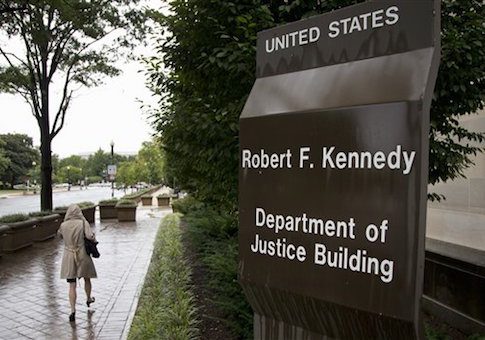The Department of Justice (DOJ) protected 58 sex offenders, including convicted child rapists, in its witness protection program, according to an audit by the agency’s Office of Inspector General (OIG).
Until 2012, the U.S. Marshals Service, which administers the Federal Witness Security (WITSEC) Program, had no idea how many sex offenders it had admitted into the program.
By July 2014, the DOJ identified 58 individuals, who "at some point in time, had been admitted into the WITSEC Program." Participants in the program are given a new identity, place to live, and a government stipend for 18 months.
"We identified several significant concerns related to the Department’s handling of known sex offenders who were once in the Program," the OIG said in an audit released Wednesday. "Ten of the 58 sex offenders formerly in the Program were convicted sex offenders at the time of their admission into the Program."
Those 10 individuals included convicted child rapists, and sex offenders who received waivers to allow them to receive a new identity.
"Each of these individuals was convicted of a sex offense, such as rape or sexual assault of children," the audit said. "Four of these 10 individuals received registration waivers at the time of their admission into the Program."
In one case, the DOJ admitted an individual who had a "history of crimes of violence, including the rape of a child with force." The Marshals Service told the OIG that law enforcement at the location where this individual was moved was notified about the situation in February 2005. However, the OIG obtained a memo in 2007 that said notifying the police was waived out of fears that doing so "would pose an extreme detriment to the safety of the witness." According to the report, there is no documentation that law enforcement had been notified that a convicted child rapist was living in the area before 2012.
The DOJ said that none of the 58 sex offenders are currently in the program. In addition to the 10 individuals who had been admitted to the program after already being convicted of a sex crime, 10 others were convicted of a sex offense while in the program, and the remaining 38 were convicted after being terminated from the program, according to the audit.
Twenty of the 58 are no longer in the program because they are dead, in prison, or have been deported.
The OIG said there are many risks with sex offenders being allowed to receive witness protection.
"Given the nature of the WITSEC Program, we believe that individuals convicted of sex-related crimes [redacted] pose risks that the Department needs to take into account and address," they said. "We believe that the Program must have strong policies in place to mitigate the public safety risk to vulnerable populations, such as children, posed by convicted sex offenders."
"We believe the Department has not taken sufficient steps to mitigate the threat posed by Program participants, including sex offenders, who commit crimes after being terminated from the Program," the OIG added.
While the OIG did not find any examples of a sex offender who received a waiver to join the program committing a new crime, the agency watchdog said that the DOJ did not have safeguards in place.
"[W]e believe that the Department generally did not utilize safeguards to protect and notify the public and law enforcement about the risk these individuals posed during the time period the waivers were in place," the OIG said.
In its beginnings in the 1970s, the witness protection program primarily served individuals connected to the mafia. The OIG said that the program evolved to admit people involved in "violent gangs and terrorism."
The OIG has raised concerns about the DOJ’s inability to keep track of sex offenders in the program for years. A list of known sex offenders was delayed for two years because the DOJ struggled to come up with "its definition of the term ‘sex offender’ for Program purposes," the OIG said.
As of August 2014, the Marshals Service identified four individuals in the witness protection program "in good standing," who had received a new identity but who had sex offenses on their records.
The OIG also found four sex offenders currently in prison who will be eligible for the witness protection program by September 2018.
